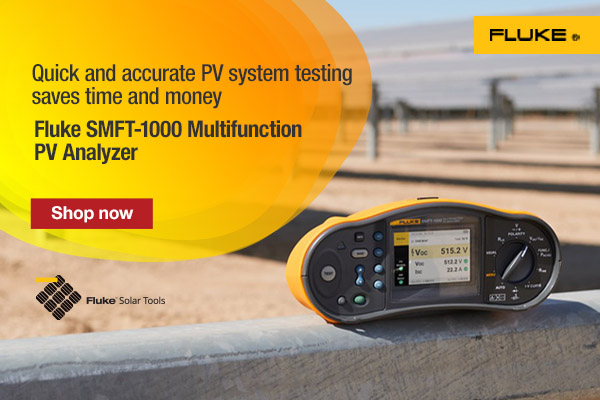Reduce, Renew, and Recycle
Reduce, Renew, and Recycle
Redefining waste-to-energy
by Ryan Cornell
The Palm Beach Renewable Energy Facility No. 2 (PBREF No. 2) began commercial operation in the summer of 2015. Located in West Palm Beach, FL., it is the first municipal waste-to-energy (WTE) facility built in the United States in more than 20 years. But PBREF No. 2 is not like the "waste incinerators" of decades past. This state-of-the-art facility is helping redefine WTE as a viable solution for meeting emissions targets, while producing renewable energy, and supporting and encouraging community recycling programs.
The facility's design includes a 2 million gallon rainwater collection system which provides all of the process water needed to operate the facility. A metals recovery system is used to maximize the recovery and recycling of an estimated 27,000 tons of aluminum, steel, and other metals each year.
PBREF No. 2's LEED Platinum-designed Visitor and Education Center features an elevated 500-foot skybridge joining it to the WTE building, and a planted rooftop garden and gallery. Photovoltaic panels cover part of the parking area and contribute to the site's sustainability.
The plant was designed with three mass-burn power boilers which can process up to 3,000 tons of post-recycled municipal solid waste (MSW) a day (more than 1,000,000 tons annually) and are capable of generating up to 95 megawatts of gross electricity.
On a typical day, trash collected from homes and businesses in Palm Beach County is delivered to one of six transfer stations. Trucks then transport the waste to the facility site, where it is distributed to either PBREF No. 2 or the Solid Waste Authority (SWA) of Palm Beach County's first WTE facility, which is also located on the site. The SWA has a dual stream recycling program encouraging residents to sort and remove containers and fiber from their trash before it is picked up.
For PBREF No. 2, MSW is unloaded into a large pit located in the refuse building. Crane operators manage the waste deliveries by clearing the area where the trucks drop the waste and separating out any large objects for additional processing or disposal, in order to avoid potentially disrupting the processing of material.
Waste is delivered through charging hoppers and fed into the boilers, where it is combusted. The heat generated by the combustion is used to produce steam, which is then delivered to the facility's turbine generator, where the energy is converted to electricity and sold to Florida Power & Light.
Flue gases and pollutants are processed by the facility's emissions control system, which includes advanced combustion controls, spray dryer absorbers (SDA) for acid gasses and sulfur dioxide (SO2) control, activated carbon injection to control mercury and dioxins/furans, a pulse jet fabric filter (PJFF) for particulate control, and a selective catalytic reduction (SCR) system for nitrogen oxides (NOx), dioxin and furan control; the first to be installed on a WTE power plant in the U.S. The cold-side SCR arrangement uses a unique heat recovery system to maximize power production without burning natural gas or other fossil fuels. A continuous emissions monitoring system analyzes the flue gas to determine the concentration of regulated emissions before the flue gas is sent to the stack.
PBREF No. 2 has demonstrated the technology meets all air emission permit targets, and in all cases, greatly exceeds emissions permit targets for all measured pollutants. Nitrogen oxides emissions tested at 30.5 parts per million (PPM), well below the less than 50 PPM allowed by the facility's permit. Carbon monoxide emissions are in the range of 5 to 24 PPM, again, well below the less than 100 PPM allowed by the permit. Sulfur dioxide, unburned hydrocarbons, dioxin and furans, and particulate matter emissions are also measurably lower than permitted levels. Harmful emissions of methane, a greenhouse gas, are also avoided due to the combustion of organic matter which would otherwise decompose inside of a landfill. Methane's impact on climate change is more than 25 times greater than carbon dioxide over a 100-year period, according to U.S. Environmental Protection Agency data.
Bottom and flyash byproducts of the combustion process are delivered, along with any metallic items, to an ash management building via a series of conveying equipment. A rotary magnet removes the ferrous metals and an eddy current separator removes the nonferrous metals from the ash stream for resale on the scrap metal market. Post combustion metal recovery exceeds 96 percent recovery of metals previously sent to the landfill, significantly improving the county's recycling rates.
The remaining ash is collected in bunkers, mixed, and loaded onto trucks for transporting to the SWA's nearby landfill. By safely landfilling ash instead of municipal waste, the volume of waste going to the landfill has been reduced by up to 90 percent. This has extended the current landfill's projected lifespan by an estimated 30 years.
PBREF No. 2 was designed and constructed by a consortium led by Babcock & Wilcox and KBR. B&W operates the plant for the Solid Waste Authority of Palm Beach County, at a design-build cost of $672 million. Ryan Cornell works in public relations at Babcock & Wilcox.
Babcock & Wilcox | www.babcock.com











